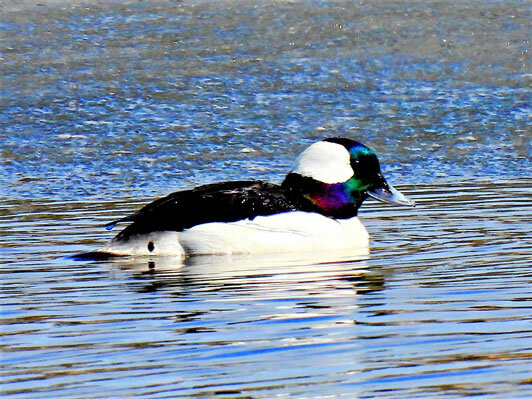
Photo courtesy Charles Martinez
This week’s Bird of the Week, compliments of the Weminuche Audubon Society and Audubon Rockies, is the bufflehead.
This eye-catching, active, small duck can be found in our area from late October until early May. Less social than many duck species, it is most often seen in pairs or small groups. Rarely found on land, they are seen in open water in the river and area lakes, moving to shallow ponds when the ice melts.
The male bufflehead is white bodied with a black back and rump. The large white patch across the back of his iridescent green and purple colored head makes him a standout on the water. Females are dark gray with a brownish head and neck and an oval-shaped white patch extending from below the eye to her nape. Like the related goldeneyes and mergansers, males do not attain adult plumage until the second winter and until then appear similar to females.
In freshwater, these ducks primarily feed on insect larvae and other aquatic invertebrates. With a slight leap, they plunge into the water, where they are propelled by their feet to locate prey, which they swallow underwater.
Most buffleheads breed near ponds and lakes in the boreal forests of Canada and Alaska. They are cavity nesters who raise young almost exclusively in holes excavated by northern flickers. The small size of these holes makes them unavailable to larger cavity-nesting ducks and prevents competition for nest sites with them.
The northern flicker is a primary cavity nester. The importance of these birds in providing nest sites for other species is discussed in the “Third Year Report of the Bird Monitoring Project” authored by Herb Grover. This report, which summarizes findings of a citizen science project conducted by members of the Weminuche Audubon Society, can be found under the Projects section of our website.
For information on events, visit www.weminucheaudubon.org and www.facebook.com/weminucheaudubon/.